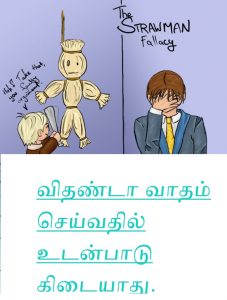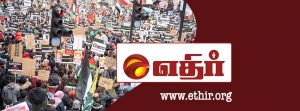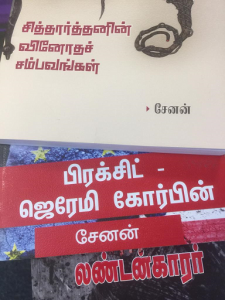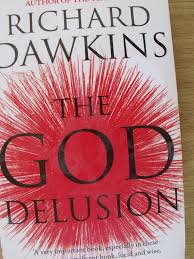A political reading of ‘Brotherless Night’
Published inTG -Jun 30, 2025 : https://www.tamilguardian.com/content/political-reading-brotherless-night
No fiction is entirely removed from reality. But some works are written almost entirely based on real events and people. There should be a new word for this—something like doculit: a form of documentation with a literary twist. Brotherless Night by V. V. Ganeshananthan is one such doculit. Published by Penguin in 2024, it blends narrative and history.
Readers who are not familiar with the historical events, or who are distant from them, may approach this book solely from a literary perspective—appreciating its narrative structure, prose. They may appreciate Ganeshananthan as choreographer of historical moments.
But Tamils who lived through these events may read it differently. Tamil readers themselves may also be divided. Those who left Sri Lanka in the early 1980s—especially after the July 1983 pogrom—or in the aftermath of the 1984–1986 clashes among Tamil militant groups, and the eventual dominance of the LTTE (Liberation Tigers of Tamil Eelam – also known as the ‘Tamil Tigers’, who demanded an independent Eelam), may read this book in a favorable light. Through the story of one young girl’s family, Ganeshananthan portrays the suffering of tens of thousands during the 1983 state-organized anti-Tamil violence. Her tone toward the LTTE may also resonate with those who later came to “hate” the Tigers.
Others, especially those who remained involved in or sympathetic to the Tamil struggle in later years, may read it with indignation.
This is because the novel is not entirely imagined—it is grounded in real events. It is not a simple “coming-of-age” story, as some Western reviewers have ridiculously and inaccurately described it. V. V. Ganeshananthan attempts to tell the story of how the Tamil armed resistance began in Sri Lanka, tracing key turning points through the experiences of one elite family. The political context matters deeply when reading such a work.
The historical events depicted are well known—almost every Tamil writer from Sri Lanka, along with many Sinhala writers, has inevitably grappled with these same events. For a curious student interested in conducting a comparative study of how different Tamil writers approached these events, it would be a fascinating yet arduous task, given the vast body of literature addressing the same familiar history. In Sri Lanka, as in many other places that have experienced war, massacre, and genocide, writing, reading, promoting, and other literary and artistic activities are not exempt from the profound political processes.
There are class, caste, and ethnic divides in who gets to narrate these stories and how they are written. Sri Lanka is one place where the same historical event can be told in completely different ways. This particular story is told from the perspective of an upper-caste, upper-class Tamil family in Jaffna—making it deeply one-sided in its portrayal of events.
The narrative’s inner voice is also shaped by anti-Tiger propaganda, reflecting influences that should be understood.
A section of the Tamil diaspora actively collaborated with the Sri Lankan government to help “finish off” the LTTE. Another section (generally can be referred to as the “anti-Tiger” grouping) came to dominate the literary and academic spaces, always emphasizing that the Tigers must be opposed and destroyed. Pro-Tiger writers and academics were often marginalized by this group, labeled as “nationalists,” or at times, even “idiots.” The anti-Tiger bloc often positioned themselves as “human rights defenders” or champions against caste, gender, or religious oppression. But their aim was not to build substantial struggles against these oppressions—instead, these causes were selectively weaponized to place themselves in the spotlight, whether in academia, literary circles, or government institutions.
This may sound like an overgeneralization—perhaps it is. Detailed description is not possible here. Tracing the complex history of Tamil diaspora literary activities and political debates is beyond the scope of this relatively short write-up.
But the broader establishment—governments, institutions, university managements, key publishers— were staunch in their opposition to Tamil independence, thus routinely promoted the anti-Tiger line, as they shared a single objective: to delegitimize the LTTE.
This anti-tiger “comfort zone” led many artists to choose opposition to the Tigers—even if they never had a direct confrontation with them, or even if they had once sympathized with the Tamil national struggle. Some strong Tiger supporters also later switched to a more “neutral” or oppositional stance.
This shift wasn’t necessarily triggered by revelations about human rights abuses or undemocratic practices. More often, it was driven by personal advancement: the desire to publish, win grants, or build careers. In academia, compromise was often the price of survival. We see similar dynamics in discussions of the Palestinian struggle. But in the Tamil case, it has been more subtle—because the anti-Tiger intelligentsia had already established hegemonic control. They denied platforms, spread slander, and actively “cancelled” artists or activists perceived as pro-Tiger. At times, they even resorted to false allegations to sideline dissenting voices. A quick survey of publications, awards, and promotional efforts over the last decades can reveals who and what have dominated the academic and literary spheres.
For a long time, this went unchallenged—except by a few marginal critics. The brutal end of the war in 2009 changed this. The Tigers were defeated. Their organizational structures splintered. Liberationist voices were silenced in Sri Lanka and cornered in the diaspora. Several new groups continued to demand “Eelam” but had broken from the Tiger tradition and were subdued by lobby-oriented politics.
However, a new phenomenon began to emerge: a younger generation of diaspora Tamils started asserting their voices more forcefully. They had no direct connection to past militancy. Though some may have held “adventurist” views of the armed struggle, most were moved by the suffering of the Tamil people—especially during the war’s horrific final phase. Though often dismissed as “nationalists,” they are no longer so easily sidelined.
Confronting this “diaspora threat” remains a primary concern of the Sri Lankan government and other institutional powers.
Defeating the LTTE through mass murder was not enough. An ideological victory was also deemed necessary—specifically, the defeat of what was perceived as “separatist ideology.” Was this pursuit truly in the interest of saving the population from violence and guiding them toward a better society? No. That may sound strange to someone unfamiliar with the inner dynamics of the Tamil community, but this was also driven by pure hatred—hatred and vengeance. There’s no way to sugarcoat this.
Many young Tamils sacrificed their lives fighting for the Sri Lankan government as paramilitaries, motivated not by political vision but by personal vengeance against the LTTE. Those active between 1986 and 1990 would recall how terror was unleashed on LTTE supporters when the Indian Peace Keeping Force (IPKF) occupied the Northern and Eastern provinces. Other militant groups were unleashed on the Tigers with the Indian army’s backing. Anyone with experience dealing with the TNA (Tamil National Army), the paramilitary group India tried to build, can testify to this violent fragmentation.
Personal vengeance and score-settling unfortunately became part of the Eelam struggle—and this culture permeated even Tamil “literary” and “intellectual” circles. Objectivity was rare. Objective political analysis even rarer.
For example, the ceasefire and peace talks of the early 2000s were vehemently opposed by this layer. They wanted the Tigers out—out of the negotiations, out of the country, off the planet. This same position shaped their attitude toward the final phase of the war in 2009. They claimed neutrality, but in effect, endorsed the state’s total military victory.
Here’s the basic outline of their narrative:
The LTTE were terrorists who held the Tamil population hostage as the Sri Lankan military advanced. They shelled and shot civilians who tried to flee. Eventually, civilians were allowed to leave after a secret negotiation. The LTTE were asked to release the hostages and halt the fighting. When the LTTE were finally defeated, the rest of the Tamil population was “saved.”
To better understand the meaning of this narrative, it helps to look at a different context—Israel and Palestine.
The official Israeli state position and its supporters often say: Hamas committed heinous terrorist acts and must be punished. They are holding Israeli hostages, who must be released unconditionally. They are also holding the Palestinian population hostage and therefore must be eliminated to “free” the Palestinian people.
Anyone researching these conflicts—whether scholar or observer—will find not only the arguments, but even the terminology, eerily similar between the Israeli and Sri Lankan state and anti tiger group narratives.
As for the immense suffering and mass killings—who is to blame? Hamas. The LTTE. Always the “terrorists.”
And anyone who questions this logic? Tens of thousands of protesters around the world who show solidarity with Palestinians are branded anti-Semitic, nationalist, or terrorist sympathizers. Now take Netanyahu- or Trump-style rhetoric, replace “Palestinian” with “Tamil,” and you’ll have the language and logic of the anti-Tiger camp in 2009.
Tens of thousands of Tamils who took to the streets across diaspora countries during the final phase of the Sri Lankan war were framed as LTTE supporters as this novel also does. The protests themselves were dismissed as “Tiger protests.” When a young Tamil man went on a hunger strike outside the UK Parliament in Westminster, it was ridiculed as mere performance—“a staged drama.”
The right-wing Daily Mail ran a sensationalist front-page headline, falsely claiming that the hunger striker had been seen eating a McDonald’s burger while claiming to fast. They made no effort to report on the protest’s actual purpose or the horrors unfolding in Sri Lanka. Yet, they went out of their way to discredit the hunger strike with what would later be exposed as a racist slander. At the time, most young Tamils in the diaspora were emotionally devastated, aware that their loved ones back home were being massacred en-masse. Some had lost entire families. There were individuals who, in desperation, threatened to jump into the Thames to take their own lives.
It was a nightmare for the Metropolitan Police—unlike anything seen in its history. Britain had never witnessed its Parliament being surrounded by a single immigrant community, “the blackies,” as some derisively framed it. In the aftermath, Westminster Council introduced new laws regulating protests outside Parliament, ostensibly to “protect the grass.”
The Daily Mail’s shocking “revelation” shook many Tamil diaspora organizations. Unsure of the truth or how to respond, they went silent. The only group that actively challenged the slander was a newly formed leftist organization, Stop the Slaughter of Tamils. They organized a meeting and campaign at Queen Mary University, calling the media coverage by its rightful name: “an outrageous racist attack on Tamil protesters.”
One question they raised was pointed: even if the hunger striker had eaten a burger—so what? Would that justify vilifying and dismissing the protest itself? How could the media ignore the actual message—that the protesters were demanding an end to mass killings and calling on Parliament to take action?
Who, in truth, was more deserving of scrutiny—the so-called “burger-eating black boy” on the pavement or the champagne-sipping MPs overlooking the protest from their windows? What about the media outlets that self-censored, refusing to report on the mass atrocities occurring in Sri Lanka? Are they not complicit in those massacres? How did the imagined burger become the central story?
I will leave the deeper theoretical analysis of slander’s origins to scholars. The point here is to emphasize its political function: slander discredits a movement, diverts its purpose, and attempts to behead its leadership—metaphorically or otherwise.
The most iconic hunger strike in Tamil Eelam history is that of Thileepan, a senior LTTE political cadre. The central character in Brotherless Night, K, is clearly modeled on him. Thileepan refused even water and died after 11 days of fasting. In the novel, the medical student Sashi (Sashikala Kulenthiran), who is also K’s first love, questions how such a death is possible. Couldn’t they have secretly kept him alive by administering water or glucose? In the end, the novel leans toward the conclusion that he was killed by the LTTE—onstage, for effect.
You can imagine, then, how the novel portrays the end of the war. The killings are undeniable—but the questions of why, how, and by whom are carefully framed. The Tigers must be blamed first and foremost—otherwise, the narrative doesn’t hold. The heroism of liberal human rights defenders cannot be celebrated unless the LTTE is cast as the central villain.
The plot of Brotherless Night is anchored in another tragic real-life incident: the assassination of a human rights activist. One of the main characters is clearly modeled on Dr. Rajani Thiranagama, the 35-year-old university lecturer who was killed in Jaffna on September 21, 1989. The LTTE (Liberation Tigers of Tamil Eelam) never denied killing her—though, they never admitted or took responsibility.
This narrative has occasionally been contested. The initial reaction at Jaffna University was that her assassination was carried out by the paramilitary group EPRLF, under the direction of the Indian Army. Much later, Thinamurasu, a Tamil newspaper, published an account in which an Indian colonel allegedly admitted that the army organized the killing. Other similar accounts exist. The Indian Army did kill many during that period, and Tamil paramilitaries also gunned down numerous civilians. But Jaffna is a small place and many there still believe Rajani was killed by the Tigers.
To this day, some Tiger supporters continue to question this. When a mistake is acknowledged, blame is often deflected. It’s true that we may never know with absolute certainty who killed Rajani. No amount of denial can erase the truth of what happened.
At the same time, there is no denying how her death has been weaponized by the authorities. She became a symbol for anti-Tiger propagandists. Her death became a rallying point for gathering support among academia and civil society. It was politically instrumentalized—heavily promoted and repeatedly invoked as “proof” of LTTE fascism. Anti-Tiger groups, Sinhala chauvinists, southern “leftists” seeking justification for their anti-Tamil policies, Indian communist parties covering up their support for the Indian state, Sri Lankan authorities, Western institutions, NGOs, and even some would-be Maoist fronts—all converged conveniently around this symbol. Rajani’s murder transcended the act of killing and became political capital.
This is why her death is a point of deep contention. The anti-Tiger camp uses her story as a reference point, which in turn fuels anger among those who still support the Tamil struggle for Eelam. Many ask: Why is the death of an English-speaking, upper-class, privileged family member treated as the central tragedy of the war, when countless other lives were lost?
Indeed, most of the characters in Brotherless Night speak English to each other. They do not represent the typical demographic of the North, but rather a small, privileged, elite section of Jaffna society—families that to this day want to assume leadership and dominate discourse as if it were their birthright. Michael Ondaatje’s Running in the Family is also about Colombo elites, but it doesn’t claim to speak for all Sri Lankans. Arundhati Roy’s The God of Small Things features privileged characters, but the storytelling cuts through those class lines in powerful ways. In contrast, Brotherless Night subtly reinforces elite perspectives while presenting itself as a broader caricature of Tamil experience.
There was another parallel Jaffna—one in which children didn’t have to wait until their twenties to learn about caste discrimination. In that world, the war wasn’t simply caused by the Tigers attacking the military. In that world, Tamil boys and girls weren’t blamed for every atrocity. Repeating known facts without soul or nuance doesn’t make a good novel. A novel isn’t a political manifesto or a tourist guide. The points made here is not about how to write a novel, but what the politics adopted by the narrative.
VV Ganeshananthan is, of course, entitled to full creative freedom—to twist, rewrite, or reimagine history in any way she sees fit. This write-up simply highlights the political position the story takes, and the subtle biases it carries. It is written from a distinctly “Jaffna liberal” point of view. These Jaffna liberals (along with sections of the older Tamil left) are a peculiar breed—they might support Hamas or welcome the Taliban’s return in Afghanistan, and they may read Frantz Fanon on revolutionary violence. They might appear radical when denouncing Modi or Zionism, but when it comes to Tamil self-determination, they take starkly reactionary positions.
The argument made during the final phase of the war—which this novel also seems to endorse—is not just reactionary; it is a justification of mass killing. In that sense, it is complicit in the massacre. The main character Sashi’s emotional distance from her “terrorist” brother in the final pages, set during the 2009 mass killing at Mullivaikal, delivers a clear message: Tigers are beyond redemption. They deserve to die. That sentiment mirrors the state’s propaganda. Calling the Tigers “fascist” justifies their extermination. Calling them “terrorists” who held Tamils hostage aligns entirely with the Sri Lankan government’s narrative.
The Mullivaikal massacre will go down in history as one of the worst atrocities committed by the Sri Lankan military. A new generation rightly sees it as part of a broader Tamil genocide. But you wouldn’t know that from reading Brotherless Night. Instead, the story seems to reinforce the “blame the Tigers” framework. In doing so, it effectively defends the massacre. Tens of thousands perished—Tigers, supporters, critics, civilians—all caught in the fire. The evidence is now public and overwhelming. Fourteen years after the event, a novel that fails to reckon with that reality offers no excuse for its insensitivity. No meaningful compassion is offered, no recognition that the so-called “end” was, in fact, a collective death. At most, the novel expresses a token “humanitarian” concern—a call for a pause in the killing, not an end to it.
The writing also weakens near the end. The brother’s character is underdeveloped—he seems to time-travel from the 1980s to 2009 with no real arc. This is not just a failure of political insight but a fundamental disconnect from Tamil community movements during that time.
One final observation: many Tamil novels have been written about the war. Only those critical of the Tigers are promoted or deemed “great works” by anti-Tiger groups. Writers like Thamilnathi or Theepachelvan are ignored. Another novel that dealt with the last phase of the war with pro-Tamil struggle point of view was dismissed as “utter rubbish,” and the writer was ridiculed for allegedly not knowing proper Tamil. This write-up is not written in the spirit of vengeance. Rather, it seeks to show the political context in which this novel was written.
Read “The Orders Were to Rape You,” a powerful account by Meena Kandasamy. In her writing, you can glimpse the violence and horror that young women faced. For a deeper socio-political analysis, I recommend Radicalizing Her: Why Women Choose Violence by Nimmi Gowrinathan—a valuable read that adds essential nuance to conversations around violence, agency, and struggle.
_____
TU Senan is a writer and activist based in the UK. He is the author of History of Resistance (English) and Politics of Burying Truth (Tamil). In addition to these works, he has written two novels and published a collection of his articles in Tamil, released in Tamil Nadu, India. He is coordinate international work of Tamil Solidarity and is also a member of the international secretariat of the Committee for a Workers’ International (CWI), where he specializes in South Asian politics and international solidarity work.



















